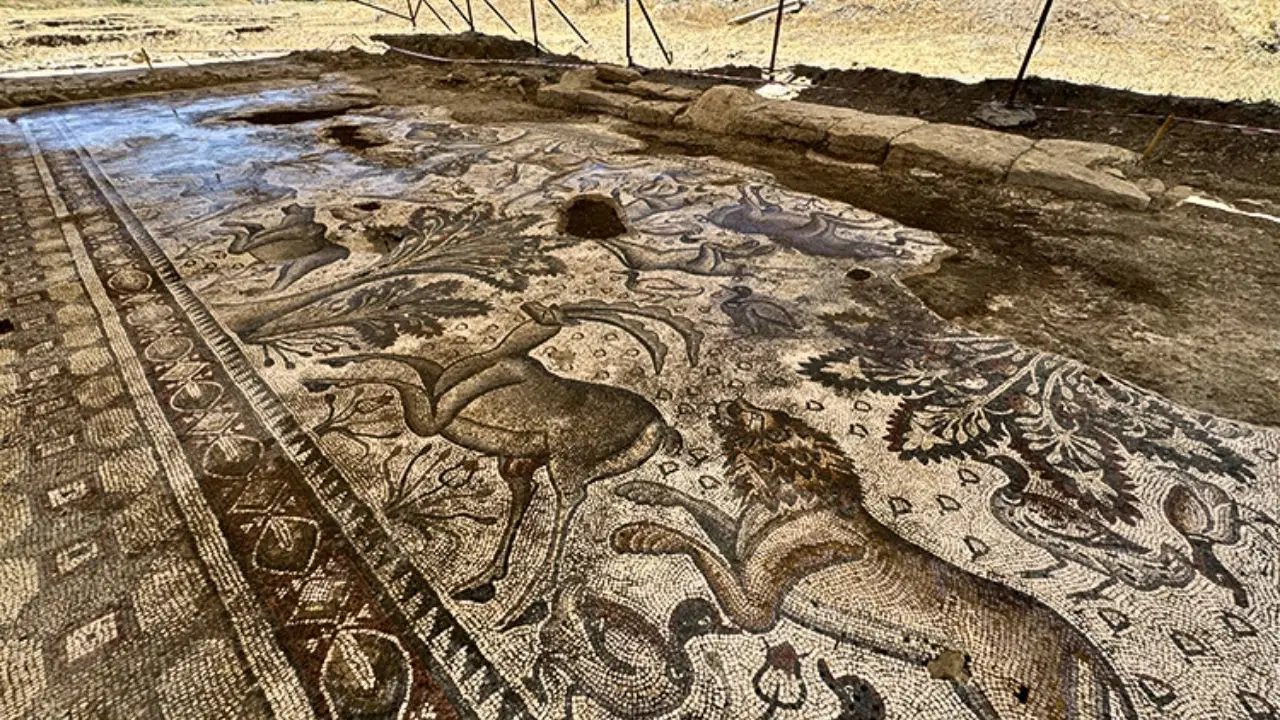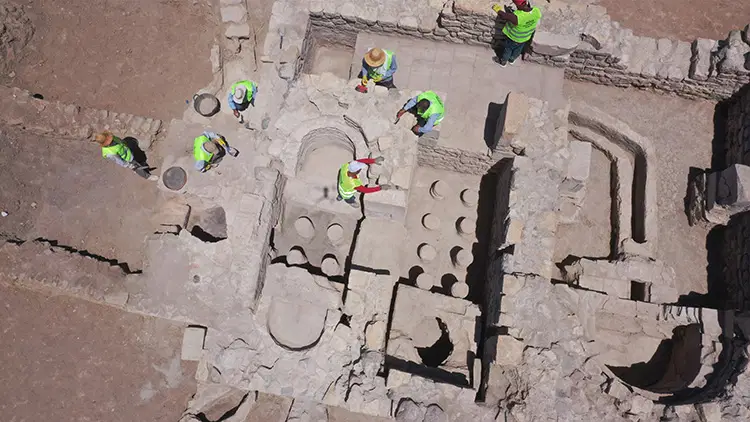He dug a hole to plant saplings, and a 1700-year-old Roman bath was unearthed.

Under the coordination of the Ministry of Culture and Tourism, the Provincial Directorate of Culture and Tourism and the Elazığ Museum Directorate conducted an underground imaging radar (georadar) survey in 2023 in the Salkaya village, where a Roman-era floor mosaic was discovered by chance while digging a hole to plant saplings. Excavations were conducted to assess the possibility of other historical structures in the area. In this context, a new structure was identified in another field, 70 meters south of the previously discovered mosaic depicting colorful and patterned animal figures.
During the archaeological excavation carried out in this area, a 75 square meter bathhouse dating back to the Late Roman Period, with underfloor heating, cold, warm and hot sections, sweating rooms, pools, clean and waste water channels, was unearthed.

BATH AFTER THE ROMAN PERIOD FLOOR MOSAIC
The Roman bath, believed to have belonged to the upper echelon of the ruling class, will be opened to tourism along with its historic floor mosaic. Shedding light on approximately 1,700 years of history and culture, the Roman bath stands out with its complex structure.
Provincial Director of Culture and Tourism Ahmet Demirdağ stated that the Roman-era floor mosaic, discovered by chance in 2023, represents a significant historical asset with its artistic structure, motifs, and pristine condition. Demirdağ explained that after the discovery of the floor mosaic, a georadar survey was conducted to assess the possibility of other structures in the area, comprised of fields and gardens, and the 30-acre area was registered.
" We discovered important finds in the region. Our colleagues continued excavations this year based on these finds and traces. We came across a very important structure 70 meters south of the floor mosaic. We came across a Roman bathhouse, which we can call a first in this region. We discovered a Roman bathhouse that belonged to the upper-level ruling class of that period. It resembled our classical bathhouse culture, consisting of warm, cold, and hot sections, underfloor heating, and possessed advanced technical features for the period. Looking at the structure, we generally believe the area was an urban settlement. We will continue our excavations in the region. "
Demirdağ emphasized the importance of these historical values in terms of introducing the region to tourism.
THERE IS A FULLY SYSTEMATIZED, PLANNED ENGINEERING IN THE STRUCTURE
Archaeologist Emre Çayır , who is in charge of the excavation area, noted that the area where the bathhouse and floor mosaic, dating back to the Late Roman Period, are located consists mostly of flat land where barley and wheat were cultivated, and that from the outside it was thought that it would not be possible to reach such beautiful architectural works here.
Çayır, explaining that history literally gushed out from the fields during the expanded work in the region after a floor mosaic was accidentally found while digging a hole for planting cherry saplings, said, " When we look at the technical features of the bathhouse structure found, it also has the distinction of being the first of its kind within the borders of Elazığ. It is also important that this architectural plan has been preserved and survived to the present day. "

Çayır stated that the system used here was the Hypocaust (hypocaustum), a heating system established by the Romans.
" The sections we call the cold, warm, and hot sections have survived to the present day with a fully systematic and planned engineering. In this respect, we can say that the bath is a truly special and important structure ," said Çayır, explaining that the bath's cut stone walls, which extend in an east-west direction, were constructed of limestone and basalt blocks.
Çayır added that the bathhouse not only offers concrete clues about the construction techniques of the period with its architecture, but also serves as a valuable example for understanding the social life, water culture, and the importance given to public health in the region.
Cumhuriyet





